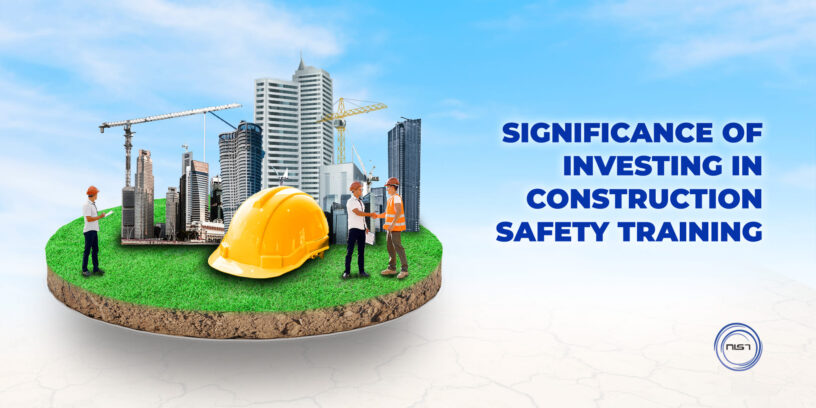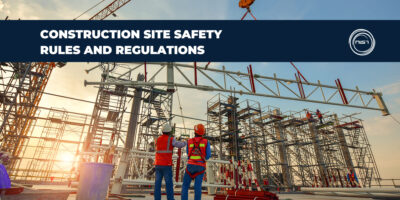India’s construction industry is its second-largest employer and contributor to the economy, following agriculture. In recent years, the country has experienced a tremendous construction boom, owing to rising affluence and urbanisation.
A successful construction project can lead to a profitable business. While construction is a big business, it also comes with a lot of risks, necessitating the need for construction safety. Risks exist on each construction site on a day-to-day basis, and the construction industry contributes to 24.20% of occupational fatalities, the highest in the country annually, as reported by the British Safety Council’s study. Each year, hundreds of male and female workers fall to their deaths and are electrocuted or buried under rubble, making construction the deadliest sector in India. There are, on average, 38 fatal accidents a day. In fact, falls from heights, electrocutions, falling walls, and scaffolding are responsible for one-in-four deaths of construction workers in India.
It is the employer’s responsibility to provide construction safety training before work begins so that workers are not injured or involved in deadly incidents in the future. Construction safety training is essential to keep employees in a safe and healthy environment, as well as to avoid harm or fatal scenarios. Some of the Government Acts codified to control the employment and working conditions of building and construction employees are listed below:
Indian Laws for construction sectors:
Building & Other Construction Workers (Regulation of Employment and Conditions of Services) Act, 1996.
Building & Other Construction Workers (Regulation of Employment and Conditions of Services) Central Rules, 1998.
Building & Other Construction Workers Welfare Cess Act, 1996.
Why invest in Construction Safety Training:
Construction accidents can happen anywhere, anytime, under any circumstances, and for any reason; they can also have a devastating impact on people’s lives, property, and finances. However, there are various ways to minimise their effects, especially when it comes to serious injuries or fatalities, as these risks could be managed if construction companies were able to prevent accidents, by taking prior precautions during construction projects, even if they may seem insignificant!
The construction sector stands to benefit greatly from investments in safety. Investing in construction safety is the most effective method to reduce accidents and improve project quality safety.
Complex buildings, such as malls, high-rise buildings, factories, and industrial complexes, require more people and resources to manage all aspects of worker safety, necessitating the implementation of an effective health and safety management system.
The Need for Safety Management in Construction Industry:
In the construction industry, the possibility of a fatality is five times more likely than in the manufacturing industry, whereas the risk of a major injury is two-and-a-half times higher.
In the past few decades, the need for safety awareness in the construction industry has been realized. This is due to the high cost associated with work-related injuries, workers’ compensation, insurance premiums, indirect costs of injuries, and litigation. Every year, a considerable amount of time is lost due to work-related health issues and site accidents.
In order to prevent all these losses, workers should be trained in safety and proper safety management should be in place to monitor and mitigate unsafe acts and unsafe conditions at the site.
Construction safety hazards and control measures:
Discussed below are some of the hazards on construction sites and their control measures.
Working at height:
The most common contributing factors in accidents are falls from great heights and objects falling from great heights, which can be avoided with simple awareness and some control measures.
Our Work at Height training programme includes extensive instructions on how to use a safety belt with an appropriate anchorage point, as well as all tools and equipment.
Electrical Safety:-
Electrocution is the second leading cause of accidents, which occur primarily as a result of substantial equipment or improper equipment usage, such as overloading of electrical circuits, current leakage due to damaged insulation or unauthorised startup of equipment, and poor equipment maintenance. This could be mitigated by putting in simple and effective control measures.
Our Electrical Safety training programme includes instruction on how to handle and use industrial plugs and sockets for all electrical equipment, as well as the LOTO system, proper PPE use, and other key control measures.
Scaffolding training:-
Scaffolding is an essential part of most construction activities, and accidents such as scaffolding falls or collapses are one of the major hazards on construction sites.
Knowledge and awareness of scaffolding safety are the crucial factors to prevent accidents and injuries, such as pre-use inspection of the scaffolding and safe working load and dismantling of scaffolding, which are discussed in our scaffolding safety training program.
The Benefits of Construction Safety Training:
- An increase in the productivity of the company.
- Reducing absenteeism among construction employers.
- On-time completion of the construction project
- Promoting employee well-being
- Retaining staff
- Educating employees on organisational policies
- Risk management
This Construction Safety Training course covers:
- Construction Industry Accidents
- Statutory Regulations pertaining to the Indian Construction Industry
- Construction Safety Management
- Safety in Excavations and Trenching
- Safety at Work at Height
- Scaffolding Safety
- Electrical Safety
- Safety in Material Handling
- Safety in Welding and Gas Cutting
- Accident case studies at construction sites
- The role of the construction manager and his/her responsibilities
- Understanding the importance of managing risk
- Different types of risks in construction include financial, legal, and human
- Risk identification
- Measurement and analysis
- Risk communication and reporting risks
- Risk management for people and processes
- Preventive measures
- Risk assessment and risk management strategy
- Responsibility and liability issues
Why NIST?
NIST is an ISO 9001-certified firm and India’s first NEBOSH Gold Learning Partner, providing quality training programmes for individuals and organisations in sectors including IT/ITES, construction, manufacturing, health care, and many more. We offer our services in many locations across the country. We have an experienced team of instructors who are all dedicated professionals with over 15 years of experience in teaching and training. If you are looking for the best instructor for your company’s safety program, look no further than NIST! For more information, please contact our client service team at +91 9384663536 or send an email to corporate.sales@nistinstitute.com.














Leave a Reply